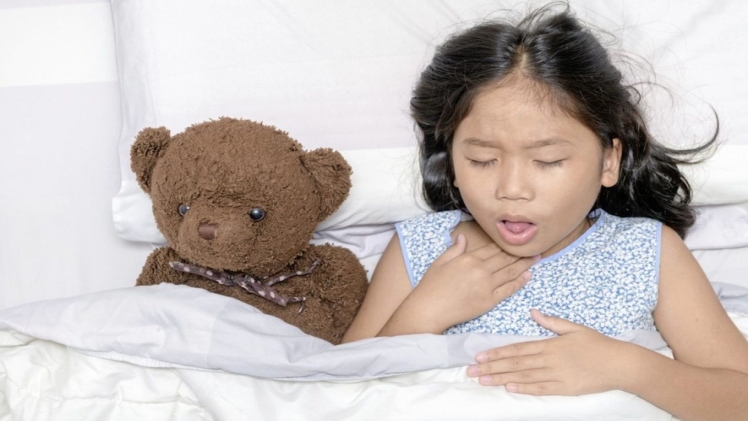A cough is a reflex that helps to clear your airway of irritants. It can be caused by a cold, the flu, allergies, or even dust. While a cough is generally not serious, it can be annoying and disruptive.
Childhood asthma
Chronic condition that affects the lungs and airways. It is characterized by inflammation and narrowing of the airways, which can lead to difficulty breathing. Asthma attacks can be triggered by allergens, cold air, exercise, or even stress. Although a cough is not usually indicative of asthma, it can be a symptom of an asthma attack. If your child has a cough that is accompanied by shortness of breath, wheezing, or chest tightness, it is important to seek medical attention as these may be signs of an asthma attack.
What is the difference between a cough and asthma?
Both coughing and asthma are conditions that can affect the respiratory system.
Cough
is a reflex that helps to clear the throat and airways of mucus and other irritants coughing can be a symptom of asthma, but it can also occur in people who do not have asthma. For people with asthma, coughing may be worse at night or during exercise. Coughing can also be a symptom of other respiratory conditions, such as allergies or bronchitis. If you have persistent coughing, it is important to see a doctor so that the cause can be diagnosed and treated.
Asthma
Chronic condition that causes inflammation and narrowing of the airways. Shortness of breath, difficulty breathing, chest tightness and wheezing – are relatively well-known, diagnosing the condition can be a bit more complicated.
What are the symptoms of childhood Asthma?
The symptoms of childhood asthma can vary from mild to severe. They may include:
Coughing especially at night or during exercise
· Shortness of breath
· Difficulty breathing
· Chest tightness or pain
· Wheezing
· Fatigue
If your child has any of these symptoms, it is important to see a doctor so that the cause can be diagnosed and treated.
How to treat childhood asthma?
Commonly used Medications
There is no cure for asthma, but it can be managed with medication and lifestyle changes. Medications that are commonly used to control asthma include inhaled steroid inhaler and leukotriene .These medications can help to reduce inflammation and open the airways.
Avoid Common triggers
In addition to medication, there are healthtap to avoid triggers that can worsen asthma symptoms. Common triggers include cold air, exercise, dust, smoke, and stress. If your child has asthma, it is important to work with their doctor to develop a plan to manage their condition
FAQ’s
What is the difference between a cough and asthma?
Cough can be a symptom of asthma
Reflex that helps to clear the throat and airways of mucus and other irritants. Coughing can be a symptom of asthma, but it can also occur in people who do not have asthma. For people with asthma, coughing may be worse at night or during exercise. Coughing can also be a symptom of other respiratory conditions, such as allergies or bronchitis.
Asthma
Chronic condition that causes inflammation and narrowing of the airways. The symptoms – shortness of breath, difficulty breathing, chest tightness and wheezing – are relatively well-known, these symptoms can over the counter inhaler and diagnosing these conditions can be easy to remove.
What are the symptoms of childhood asthma?
The symptoms of childhood asthma can be trigger with online asthma it’s varying from mild to severe. They may include coughing, especially at night or during exercise, shortness of breath, difficulty breathing, chest tightness or pain, and wheezing.
Conclusion
Coughing and asthma are both conditions that can affect the respiratory system. A cough is a reflex that helps to clear the throat and airways of mucus and other irritants. Coughing can be a symptom of asthma, but it can also occur in people who do not have asthma. Asthma is a chronic condition that causes inflammation and narrowing of the airways. The symptoms are shortness of breath, difficulty breathing, chest tightness and wheezing – are relatively well-known, diagnosing the condition can be a bit more complicated.





